What is digital marketing? Let’s explore the answers and understand the importance of it for business!
The world is undergoing a tremendous transformation, and at the heart of this change is the influence of digital technology. We find ourselves living in an era where nearly every part of our lives is touched by digital technologies, from the way we communicate and shop to the way we seek information and entertainment.
This digital revolution has not only reshaped our daily routines but has also revolutionized the way businesses operate and interact with their customers.
Please take a moment to watch this insightful video showcasing the incredible digital transformation taking place in our era.
Throughout this blog , we will explain “What is digital marketing” and digital marketing basics for beginners.
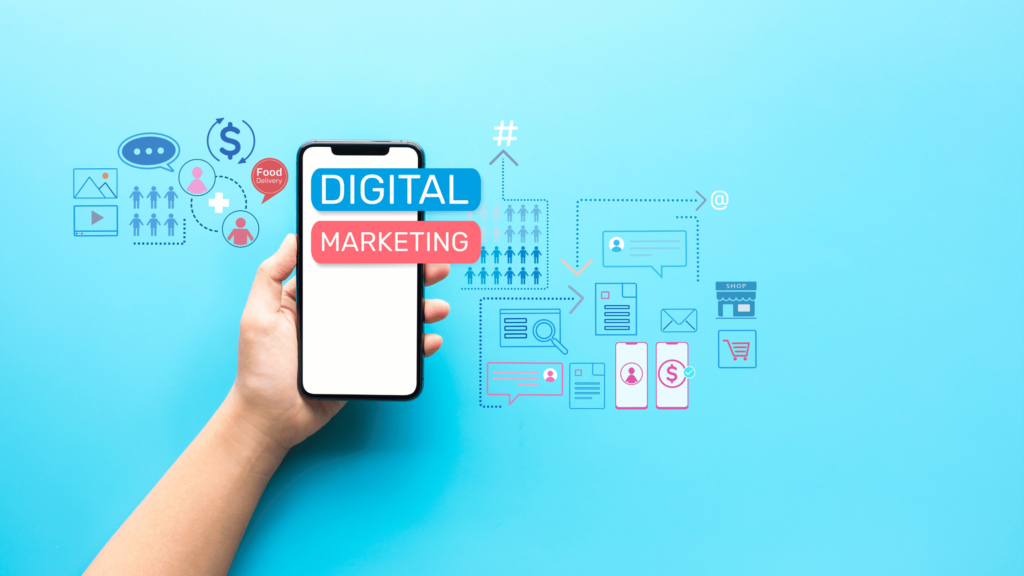
Did You Know??
Experts expect the global digital ads and marketing field will hit $786.2 billion by 2026, with clicks and display ads as the top forms.
What is digital marketing?
Digital marketing is using the power of the internet (online platforms) to promote your business. It’s all about reaching people online to tell them what you do and what you offer.
Earlier brands used to advertise in newspapers, on TV, or by putting up posters or billboards. But in digital marketing, brands use websites, social media, email, and other online tools to get the word out about their products or services.
Imagine you have a shop and want more people to know about it. With digital marketing, you can use your business website, different social media accounts, and emails to let people know you exist and why they should visit your shop.
You can even show them special offers or interesting stories to get them excited. Refer to how we at DigiFix use various digital platforms to reach our audience.
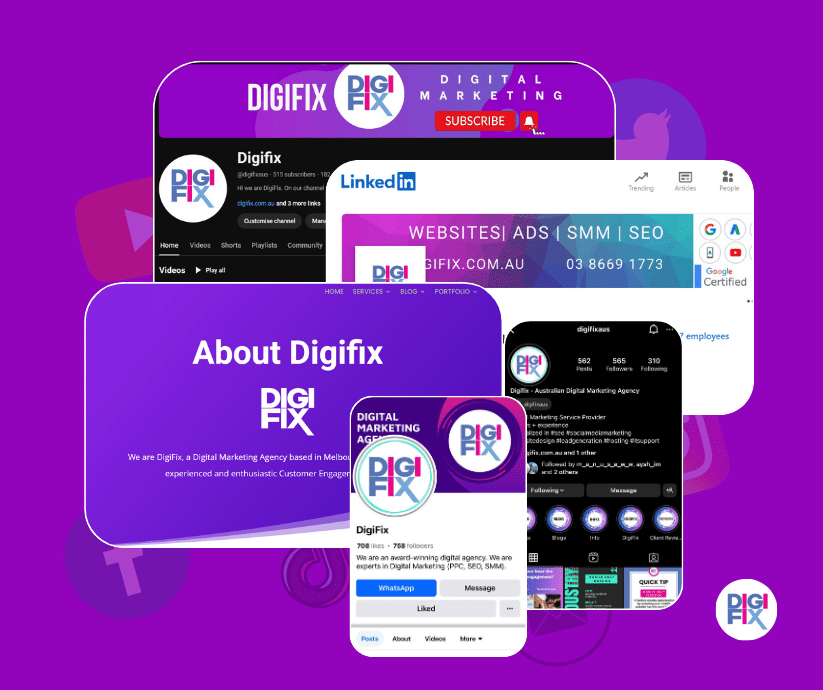
The Evolution of Digital Marketing
The term “Digital Marketing” made its debut in the 1990s, coinciding with the rise of the internet and the beginning of the Web 1.0 platform. Web 1.0 helped users access information but lacked the ability of information sharing.
This uncertainty about the effectiveness of digital platforms continued among marketers until the internet achieved widespread adoption.
In 1993, the 1st clickable banner went live, and HotWired purchased several banner ads for advertising.

This event marked the initiation of the shift toward the digital marketing era.
Consequently, 1994 witnessed the introduction of new technologies into the digital marketplace, the same year Yahoo was launched.
Initially known as “Jerry’s Guide to the World Wide Web” after its founder Jerry Yang, Yahoo gained nearly 1 million hits within its first year. This success prompted significant changes in the digital marketing landscape, with companies optimizing their websites to improve search engine rankings.
The year 1996 saw the introduction of additional search engines and tools like HotBot, LookSmart, and Alexa.
In 1998, Google was born, and Microsoft launched the MSN search engine, while Yahoo introduced Yahoo web search. However, the bursting of the internet bubble in 2000 resulted in consolidation, leaving larger search engines as dominant players.
The digital marketing realm experienced a significant wave in 2006, with reported search engine traffic reaching approximately 6.4 billion a month. In response, Microsoft launched Live Search to compete with Google and Yahoo.
The next era, Web 2.0, transformed users from passive observers to active participants, encouraging interaction among users and businesses. The internet earned labels like the “super information highway,” leading to a significant increase in information flow volumes, including channels utilized by digital marketers.
By 2004, internet advertising and marketing in the US alone generated around $2.9 billion.
Social networking sites emerged, starting with MySpace and later Facebook, presenting new possibilities for companies to market their products and brands.
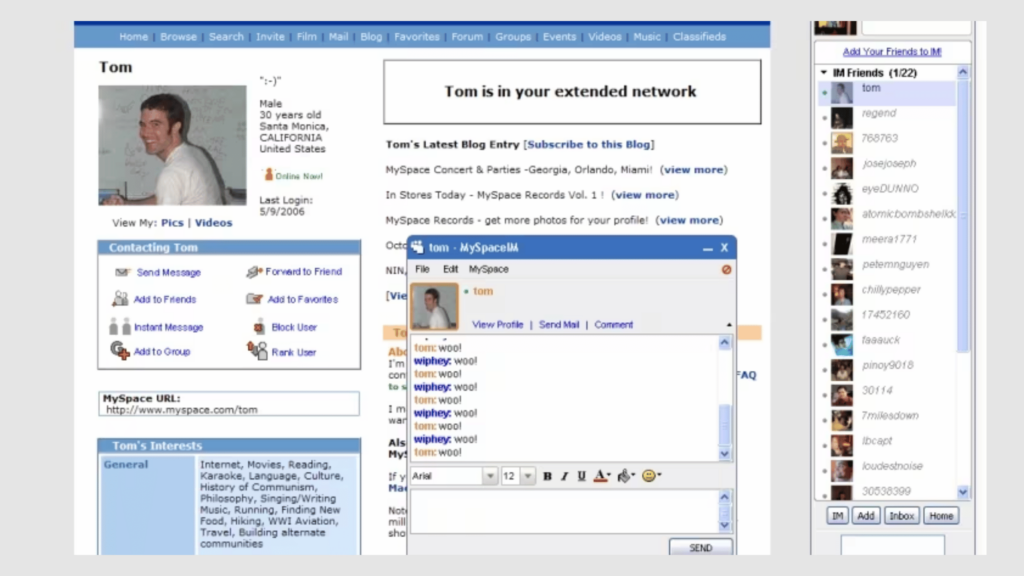
The introduction of cookies marked a crucial milestone in digital marketing, allowing advertisers to track browsing habits and tailor promotions to user preferences.
Initially designed to record user habits, cookies have evolved to offer marketers various ways to gather user data.
Digital marketing has evolved to make products accessible to customers at all times. Statistics from 2014 indicate that social media posting is the top online activity in the US, with the average American spending 37 minutes daily on social media.
Platforms like Facebook, Twitter, Pinterest, and Instagram are widely used by digital marketers, with notable success stories in customer acquisition and brand promotion. LinkedIn, Twitter, and Facebook are the leading social networking sites used by marketers.
Consumer Transformation: The Shift to Online Shopping Platforms
The majority of consumers have transitioned to online shopping due to its unparalleled convenience, accessibility, and variety. According to a study done by Datareportal in 2023,
- 56.5% of consumers purchased a product or service using online platforms
- 27.9% of consumers ordered groceries via online stores.
Refer to the image below to see all the statistics related to Online shopping trends.

Source: Dataportal
Online platforms enable shoppers to purchase from the comfort of their homes, saving time and eliminating the need to travel to physical stores. The vast selection of products available online, along with the ability to compare prices and read reviews, empowers consumers to make well-informed decisions.
Types of Digital Marketing:
Digital marketing types, also known as digital marketing channels, refer to the different online platforms and methods businesses use to promote their products, services, or brand to a target audience. These channels use digital technologies and the internet to reach and engage with potential customers.
1.Content marketing
Content marketing is a marketing technique focused on creating and sharing helpful, relevant, and consistent content to attract and engage a specific target audience.
The primary goal of content marketing is to build trust, brand awareness, and customer loyalty by delivering valuable and meaningful information to the audience.
This content could be blog posts that share valuable tips & tricks, video content, or images.
Content marketing has a pivotal role within the broader landscape of digital marketing. It’s a fundamental component that forms the backbone of many digital marketing strategies.
Content marketing isn’t just a standalone strategy but a foundational pillar that complements and supports various digital marketing efforts. Its ability to create meaningful connections, educate, and drive action makes it an integral part of successful digital marketing campaigns.
Today, content marketing is not a complex approach as there are many AI tools and other online tools that help to create content quickly and efficiently. For example, Canva is a great tool that helps to create different types of graphic content.
And checkout our list of free AI copywriting tools list for your copywriting needs.
2.Email marketing
Email marketing is a part of digital marketing that helps businesses connect with target audiences directly. Basically, email marketing include sending emails about products or services, discounts, tips & tricks, and more to a group of individuals through email.
By delivering personalized and relevant content directly to the inbox, businesses can engage their audience on a one-to-one level. This direct interaction fosters brand loyalty and helps the brand at the forefront of the customer’s mind.
Whether it’s promoting a new product, announcing a special offer, or providing exclusive content, well-crafted email campaigns can influence recipients to take desired actions.
Businesses use Email marketing at various stages of the customer journey, from welcoming new subscribers to re-engaging inactive customers.
In terms of analytics, email marketing provides valuable insights into campaign performance. Metrics such as open rates, click-through rates, and conversion rates offer data-driven insights that help marketers understand what works and what needs improvement.
Refer to our list of Email marketing BEST practices that drive 100% results cost effectively.
3.Affiliate marketing
Affiliate marketing is like teamwork where businesses partner with individuals or other businesses to promote their products. These partners, known as affiliates, earn a commission for every sale or action they drive to the business.
It’s a win-win – businesses get more sales, and affiliates earn money for helping to sell stuff. Affiliates often use their websites, social media, or other platforms to share links or recommendations.
As a part of digital marketing, affiliate marketing offers unique advantages and a mutually beneficial relationship.
4.SEO (Search Engine Optimization)
Search Engine Optimization (SEO), is like making your website friendly and attractive to search engines like Google.
Imagine the internet is a giant library, and when someone searches for a book (information), you want your book (your website) to be on the first few shelves.
When people search for things related to your business, good SEO ensures that your website is among the first they see in search results.
In the broader context of digital marketing, SEO is a foundation stone. It complements other strategies like content marketing, social media, and paid ads.
By making your website rank higher in search results, SEO increases your online visibility, attracts more visitors, and ultimately, boosts your business’s success in the digital realm.
You can learn more about SEO in our SEO for beginners tutorial,
5.Search Engine Marketing (SEM) / Pay-Per-Click (PPC)
Search Engine Marketing (SEM) and Pay-Per-Click (PPC) advertising are like the express lanes that get your business noticed quickly.
Imagine your business is a store in a shopping mall, and the mall is the internet. SEM/PPC is like putting up flashy billboards right at the entrance, ensuring that people see your store first when they’re looking for something specific.
SEM involves creating ads that appear at the top of search engine results when someone types keywords. PPC, on the other hand, means you only pay when someone clicks on your ad. It’s like paying for ads that work – you only spend money when someone is interested enough to check out what you offer.
These ads are highly targeted. You can decide when and where your ads appear, and they reach the right people at the right time.
SEM/PPC delivers quick, measurable results, driving traffic to your website instantly.
This makes it a powerful complement to other strategies like SEO and content marketing.
6.Social Media Marketing
Social media marketing is a form of digital marketing that uses social media platforms to promote products, services, or brands.
The primary goal is to connect with the target audience, build brand awareness, drive website traffic, and ultimately achieve business objectives.
Social media marketing involves creating and sharing content on various social media platforms, like Facebook, Instagram, Twitter, LinkedIn, and others.
Components of social media marketing include:
Content Creation: Creating engaging and relevant content, such as text, images, videos, and infographics, according to the preferences of the target audience. You can research to identify what your target audience prefers and then create content accordingly.
Audience Engagement: Actively interacting with the audience through comments, messages, likes, and shares to build a community around the brand.
Social Media Advertising: Using paid advertising features on social media platforms to reach a larger and more targeted audience. For example, businesses can use Facebook and Instagram ads to promote their products and services.
Analytics and Monitoring: Tracking and analyzing the performance of social media campaigns using analytics tools to measure key metrics and make data-driven decisions.
Influencer Marketing: Collaborating with influencers and individuals with a significant following on social media to promote products or services.
Social Media Strategy: Develop a comprehensive plan that outlines goals, target audience, content calendar, and key performance indicators (KPIs) to guide the social media marketing efforts.
Social media marketing helps businesses to directly engage with their audience, get feedback, and adapt strategies based on real-time insights. It has become an essential component of modern marketing strategies due to the widespread use of social media platforms and their influence on consumer behavior.
Facebook, Twitter, and Instagram stand out as the most widely embraced digital platforms for social media marketing, closely followed by LinkedIn and YouTube.
More types of digital marketing,
Display Advertising: Placing visual ads (banners, images, videos) on websites and other online platforms to increase brand visibility and drive traffic.
Mobile Marketing: Targeting users on mobile devices through channels like mobile apps, SMS marketing, or location-based advertising.
Video Marketing: Creating and sharing videos to convey marketing messages. This can include product demonstrations, tutorials, testimonials, and other video content.
Podcast Advertising: Promoting products or services through sponsored content within podcasts, which have become a popular form of digital media.
Chatbots and Messaging Apps: Using automated chatbots or messaging apps to engage with customers, answer queries, and provide information.
The choice of a digital channel depends on factors such as the target audience, business goals, budget, and the nature of the products or services being promoted. Many businesses use a combination of these channels to create a comprehensive digital marketing strategy.
A Glimpse into Australia’s Digital Landscape: Internet, Social Media, and Mobile Insights (2023)
Australia’s digital landscape has witnessed significant growth and transformation, with data from DataReportal providing valuable insights into the nation’s internet and social media usage in early 2023.
Aspect | Statistics |
Internet Users (2023) | 25.31 million |
Internet Penetration (2023 | 96.2% |
Social Media Users (January 2023) | 21.30 million |
Social Media Penetration (January 2023) | 81.0% |
Cellular Mobile Connections (2023) | 32.71 million |
Mobile Connections as % of Population | 124.3% |
Facebook Users (Early 2023) | 14.90 million |
YouTube Users (Early 2023) | 21.30 million |
Instagram Users (Early 2023) | 11.65 million |
TikTok Users (Early 2023, 18+) | 8.30 million |
LinkedIn “Members” (Early 2023) | 14.00 million |
Pinterest Users (Early 2023) | 3.45 million |
Why is digital marketing crucial for small businesses and sole traders?
Digital marketing is crucial for small businesses and sole traders for several compelling reasons. In other words, let’s see the benefits of digital marketing for businesses of any scale.
Cost-effective: Digital marketing can be more budget-friendly than traditional advertising methods like TV or print ads. Small businesses often have limited marketing budgets, and digital marketing allows them to reach a broad audience without breaking the bank.
Targeted reach: With digital marketing, you can exactly target your ideal customers. Through tools like social media advertising and Google Ads, you can narrow down your audience based on demographics, interests, location, and more. That means your marketing efforts are more likely to reach people genuinely interested in your products or services.
Level playing field: The Internet is a great platform for small businesses to compete with large brands. A well-executed digital marketing strategy can help level the playing field, allowing smaller businesses to showcase their unique selling points, expertise, and quality, often without a massive advertising budget.
Measurable results: Digital marketing provides real-time data and analytics. Small businesses can see what is working and what isn’t, allowing for quick adjustments and improvements. This data-driven approach enables a better understanding of the return on investment (ROI).
Increased visibility: A strong online presence is essential in today’s digital age. Potential customers often turn to the internet to search for products or services. Digital marketing can help small businesses appear in search engine results, social media, and other online platforms, increasing their visibility to a broader audience.
Enhanced customer engagement: Digital marketing tools, such as social media and email marketing, enable small businesses to engage with their customers more effectively. This engagement can lead to better customer relationships, brand loyalty, and valuable feedback for improvement.
Flexibility and adaptability: Small businesses can quickly adjust their digital marketing strategies to respond to changing market conditions, consumer preferences, or business goals. This flexibility is a significant advantage in a dynamic and fast-paced digital landscape.
Global reach: Digital marketing has the potential to reach a global audience. Small businesses and sole traders can expand their reach beyond their local or regional market, opening up opportunities for growth and expansion.
24/7 Availability: The internet never sleeps, allowing small businesses to be “open” 24/7. That means potential customers can learn about your products or services and make purchases at any time, increasing convenience and accessibility.
In summary, digital marketing is crucial for small businesses and sole traders because it provides a cost-effective, targeted, and measurable way to compete in the digital landscape, connect with customers, and grow their businesses in a highly competitive and technology-driven world.
How to build a Digital marketing strategy for your business?
Creating an effective digital marketing strategy involves several key steps, particularly for small businesses and novice digital marketers. Here’s a brief guide to help you get started:
- Set SMART Goals:
Begin by establishing Specific, Measurable, Achievable, Relevant, and Timely (SMART) goals. Focus on objectives that drive your strategy forward, ensuring clarity and direction for your efforts.
- Identify Your Audience:
Clearly define your target audience based on age, gender, demographics, and purchasing behavior. Understanding your audience helps to choose the right digital marketing channels and tailor campaign content.
- Create a Budget:
Develop a budget aligned with your SMART goals and the chosen digital channels. This ensures cost-effective spending and prevents overspending on channels that may not yield desired results.
- Select Digital Marketing Channels:
Choose the digital marketing channels that best align with your goals, audience, and budget. Options include content marketing, PPC campaigns, social media, and more. Tailor your choices to maximize effectiveness.
- Refine Your Marketing Efforts:
Analyze campaign data once it concludes to identify successful elements and areas for improvement. Utilize digital technologies and software to gather and present data in user-friendly dashboards. Platforms like Mailchimp offer digital marketing analytics reports to centralize campaign tracking.
By following these steps, you’ll be on your way to creating a digital marketing strategy that enhances brand awareness, engagement, and sales. Regularly refine your approach based on insights gained from data analysis for continuous improvement.
Did you know?
Did you know that digital marketing can be up to 50% more cost-effective than traditional forms of advertising?
According to a study by the Interactive Advertising Bureau (IAB), digital marketing campaigns provide a significantly higher return on investment (ROI) when compared to traditional advertising channels.
The average cost of reaching 1,000 people, known as cost per impression, is significantly lower in digital marketing. For example, in a recent study, the CPI for a digital display ad was about $2, compared to over $5 for a traditional print ad in a local newspaper.
In digital advertising, you only pay when someone clicks on your ad (cost-per-click). That means you’re not wasting money on people who aren’t interested. On average, a click in a digital advertising campaign can cost around $1 to $2, while a similar action in a traditional context, like direct mail, can cost around $3 to $4.
🚀 Elevate your brand to new heights and conquer the digital landscape with DigiFix
🌐 At DigiFix, we do not just offer services; we craft experiences that resonate, engage, and convert.
🔍 Dive into Search Engine Optimization (SEO) with our SEO experts, ensuring that your website ranks high on search engines and captivates your audience from the first click.
🌟 Our Social Media Marketing strategies are designed to turn casual scrollers into dedicated followers, creating a community around your brand.
💡 Unleash the power of words with our Content Marketing team, weaving stories that tell your brand story and make it unforgettable.
📈 Experience the impact of targeted advertising with our Search Engine Marketing (SEM) campaigns, driving qualified leads to your doorstep.
📧 Nurture and grow your customer relationships through our Email Marketing campaigns, delivering personalized content that speaks directly to your audience.
What sets DigiFix apart is not just our range of services, but the personalized approach we bring to every project. Our team becomes an extension of yours, working collaboratively to achieve your unique goals. Ready to embark on a journey of digital transformation? Explore our services and let DigiFix be your partner in digital success! 🌐✨
Do you want more traffic?
—————
Hi, we are an Australian digital agency doing groundbreaking work to help a business like yours reach its full potential. My only question is will you qualify for our services?
Do you want more traffic?
—————
Hi, we are an Australian digital agency doing groundbreaking work to help a business like yours reach its full potential. My only question is will you qualify for our services?


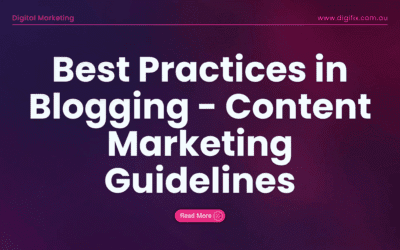

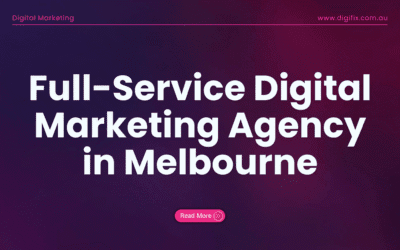
0 Comments